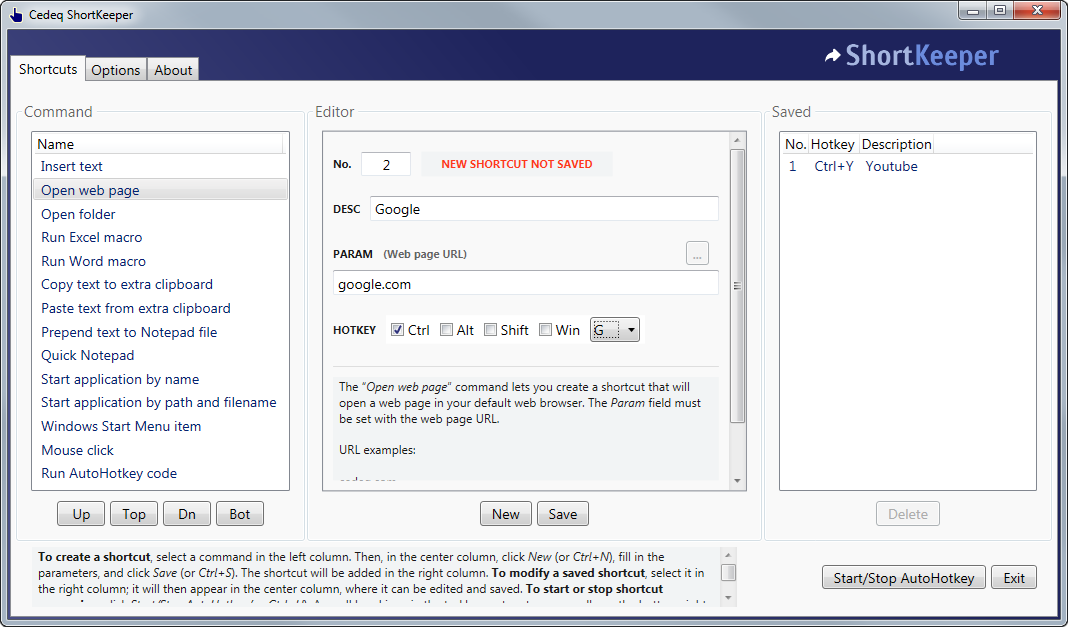


The goal when picking keywords is to choose terms that you think people will search for when they’re looking online for what you offer. We’ll go into more detail in the “Pick your keywords” section below, but you can read an in-depth discussion of how bidding works here. In terms of setting bids for your keywords, you should balance picking a bid that will help get your ad a desirable ranking, while still staying within your budget. You can change your budget and bids any time, so if something isn’t working, you can adjust to meet your needs. For example, if you want to draw shoppers to your “kids crafts” products one month, you should consider setting a higher budget for that campaign, and lowering the budget for another, less important one. But in general, you should set different campaign budgets and bid amounts based on your business goals. the amount you want to pay for your whole account) evenly across your campaigns, until you get an idea which one work best for your business. When you’re first starting out, it can be a good idea to spread your overall budget (i.e.

Your bid is the amount you're willing to spend on a keyword if someone searches for that term and then clicks your ad. Your budget is the amount you want to spend on each campaign per day. With Google Ads, you control how much you spend using two different settings: your daily budget and your bids. The more focused and specific your ads are, the more people you can reach who are interested in exactly what you have to offer. Ad Group 3: Fabric and embroidery threadĬreating separate campaigns, ad groups, ads, and keyword lists for your products helps keep your ads relevant, making sure that someone who’s looking for “glitter glue,” for example, doesn’t accidentally see your ad for “embroidery thread” and think you don’t have what they need.For instance, if you run a craft supply store, you might create these campaigns and ad groups: Think about campaigns as representing larger categories in your business, and ad groups as representing smaller, more specific sets of products or services. There are two levels of organization within a Google Ads account: campaigns (the higher level) and ad groups (the lower level - you can have multiple ad groups in each campaign). (One good option is to mirror the structure you already use on your website.) How do you set your account up for success from the beginning? Start by breaking down your products or services into categories, and basing your account structure on those. (You don’t necessarily pay your entire bid price for every click - that just sets up a range of possible costs-per-click you might pay.)Ĭonversion: A conversion takes place when someone who has clicked your ad goes on to take another action you’ve designated as important - like making a purchase, signing up for a newsletter, or calling you. Your rank is determined using your bid, your Quality Score, and other factors.ĬPC (cost-per-click): The actual amount you pay when someone clicks on your ad. A good Quality Score can lower your bid costs and improve your ad rank in the search results.Īd Rank: This metric helps determine where your ad will show up, relative to other ads, when it's triggered to appear on Google. the webpage where people will be taken when they click your ad). Quality Score: This metric tells you how relevant your keywords are to your ad - and to your landing page (i.e. (Since, with Google Ads, you don’t pay to show up - only when someone clicks on your ad to visit your site or call you.) When setting up an ad campaign, you’ll pick a list of keywords that you think people might search for when they want what you have to offer (and don’t worry: we can help).īid: This is the maximum amount you’re willing to pay when someone clicks on your ad. Keywords: These are the words or phrases that people type into Google Search, which trigger your ad to appear.


 0 kommentar(er)
0 kommentar(er)
